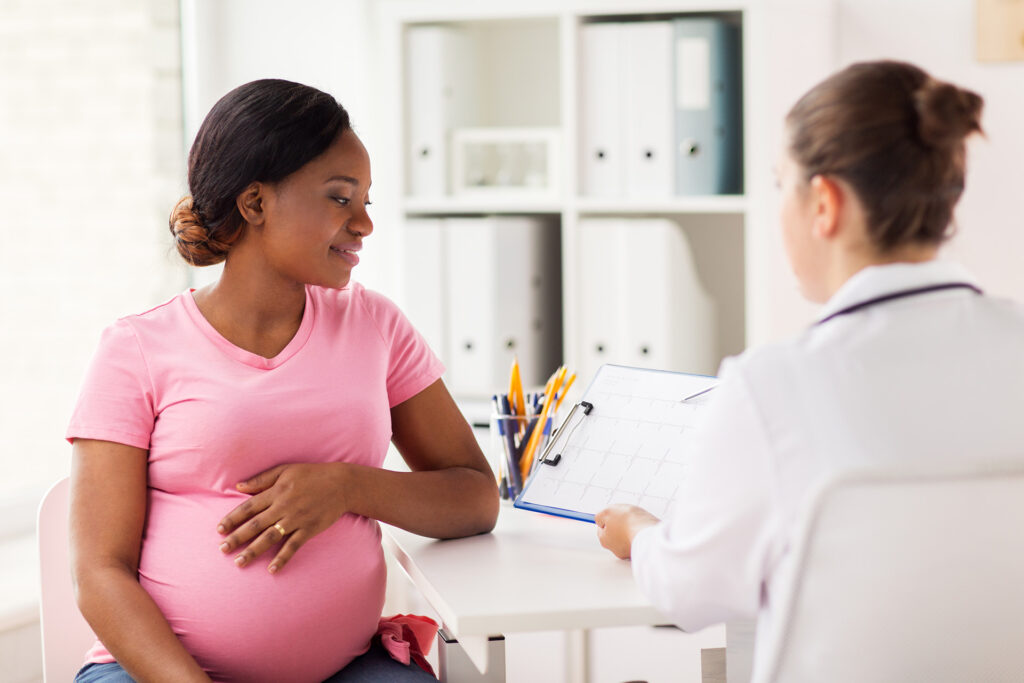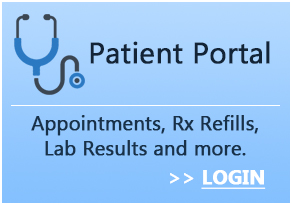
Fifth disease is a common childhood illness caused by a highly contagious virus called parvovirus B19. While it typically affects children, it can also infect adults — including pregnant women. Most people with Fifth disease recover without intervention within a few days, but pregnant women are at much greater risk of complications.
Empire OBGYN is here to arm you with the info you need to stay safe — especially with the current rise in cases of Fifth disease in the U.S. As always, our goal is to help you protect your health and the health of your baby. So, let’s go over the symptoms, risks, and prevention strategies for Fifth disease in pregnancy.
Fifth Disease: A Common Childhood Illness
What is Fifth Disease?
It’s one of the six common childhood rash illnesses. The name “Fifth disease” actually comes from its place on a historical list of common childhood rash illnesses. It’s also commonly referred to as “slapped cheek disease” because of its most recognizable symptom: a bright red rash on the cheeks.
How is Fifth Disease transmitted?
This disease is highly contagious and spreads through respiratory droplets — similar to how a cold or flu spreads. This means it’s easy to catch in environments where children are gathered, like schools or daycare centers. Most people will contract Fifth disease at some point during their childhood, and they typically maintain their immunity into adulthood. That’s why it’s less common to contract Fifth disease as an adult.
Common Misconceptions
Many people confuse this disease with other common childhood illnesses that cause a rash, like measles and rubella. It doesn’t share the same symptoms or long-term complications. Furthermore, the “slapped cheek” rash that appears with Fifth disease, along with joint pain in adults, sets it apart from other illnesses.
Signs and Symptoms of Fifth Disease
The symptoms of Fifth disease can vary depending on the age of the infected person.
Symptoms In Children
The hallmark and most common symptom is a “slapped cheek” rash. This rash appears as a bright red rash on the face, often with a lace-like pattern. Other symptoms may include:
- Fever
- Headache
- Sore throat
- Runny nose
- Fatigue
Symptoms In Adults
The most common parvovirus symptoms in adults are joint pain and swelling, particularly in the hands, wrists, and knees. Some adults may also experience a lacey rash on the legs, torso, face, and neck, but it’s often less noticeable than in children. Other symptoms in adults include the same flu-like symptoms that affect children.
Symptoms in Pregnancy
While some expectant mothers may not show any symptoms, it’s important to be aware of the potential risks associated with Fifth disease during pregnancy. Symptoms usually appear 4-14 days after exposure to the virus.
Severe Complications
In rare cases, the disease can cause severe anemia or immune-related issues, particularly in people with compromised immune systems. It’s important to seek medical attention if you or your child experience severe symptoms.
Fifth Disease and Pregnancy: Understanding the Risks
Contracting the disease during pregnancy, especially in the first and second trimester, can pose risks to the fetus. While the risk of serious complications is relatively low, it’s important for pregnant women to be aware of the potential dangers.
Potential risks of Fifth disease in pregnancy include:
Miscarriage or Stillbirth. The risk of this happening is low — approximately 2%.
Fetal anemia. The virus can cause a low red-blood-cell-count in your baby.
Hydrops fetalis. This is a life-threatening condition that can cause severe fluid buildup in the fetus.
We understand that learning about these risks can be emotionally distressing for expectant mothers. However, it’s important to remember that most adults are already immune to Fifth disease and most cases of Fifth disease in pregnancy do not result in serious complications.
With that being said, it’s always a good idea to alert your doctor if you know you’ve been exposed to Fifth disease during your pregnancy.
Diagnosing and Testing for Fifth Disease
If you’re pregnant and have been exposed to Fifth disease, it’s crucial to consult with your OBGYN or healthcare provider for regular monitoring and testing. Early detection and intervention can help minimize the risks and ensure the health of both you and your baby.
Diagnosis
Fifth Disease is typically diagnosed based on the physical symptoms, such as the “slapped cheek” rash and joint pain. However, blood tests can also be used to confirm the diagnosis and detect the presence of parvovirus B19 antibodies.
Monitoring the Fetus
If a pregnant woman tests positive for parvovirus B19, her OBGYN may recommend regular ultrasounds to monitor the health of the fetus and detect any signs of anemia or other complications.
Treatment Options for Fifth Disease
While there’s no specific treatment for the disease, most cases resolve on their own within a few weeks.
For children and non-pregnant adults, treatment usually involves:
- Rest. Getting plenty of rest can help your body recover.
- Hydration. Staying hydrated helps your immune system function more efficiently.
- Over-the-counter medications. Over-the-counter medications can be used to manage symptoms such as fever and pain.
For pregnant women with Fifth disease, the focus of treatment is on monitoring the health of the fetus. If severe fetal anemia develops, your doctor may recommend intrauterine blood transfusions to treat the baby before birth.
After exposure to the disease, it’s important to follow up with your OBGYN for regular monitoring. This will help ensure that there are no further complications and that your baby is developing normally.
Preventing Fifth Disease: Protecting Yourself and Your Baby
While there is no vaccine or cure for Fifth disease, there are steps you can take to reduce your risk of infection, especially if you’re pregnant:
- Practice good hygiene. Wash your hands frequently with soap and water, especially after touching public surfaces or coming into contact with sick individuals.
- Avoid touching your face. Avoid touching your eyes, nose, and mouth with unwashed hands.
- Stay away from sick people. If possible, avoid contact with individuals who are sick, especially children.
- Limit exposure to high-risk environments. Pregnant women should consider avoiding daycare centers, schools, or other places where children are likely to be infected.
Remember, regular prenatal care is essential for monitoring your health and the health of your baby. By taking these precautions and seeking timely medical attention, you can help protect yourself and your child from the risks of Fifth disease.
When to See Your OBGYN for Fifth Disease
If you’re pregnant and suspect exposure to the disease, it’s important to contact your OBGYN immediately, even if you don’t have any symptoms. Early detection and monitoring can help minimize the risks to your baby’s health.
Here are just a few reasons to see your OBGYN:
- Symptoms. If you experience any symptoms of Fifth disease, such as a rash, joint pain, fever, or fatigue, it’s important to seek medical advice.
- Exposure. If you know you’ve been exposed to someone with the disease, contact your OBGYN for testing and monitoring.
- Regular prenatal care. Even if you don’t have any symptoms or concerns, it’s important to attend regular prenatal check-ups and ultrasounds to monitor the health of your baby.
Empire OBGYN is here to provide you with the care and support you need during your pregnancy. Our team of experienced healthcare professionals can help you manage the risks of Fifth disease during pregnancy and ensure the health and well-being of both you and your baby.
Contact us today at (716) 877-1221 to schedule your appointment for testing and expert guidance.





